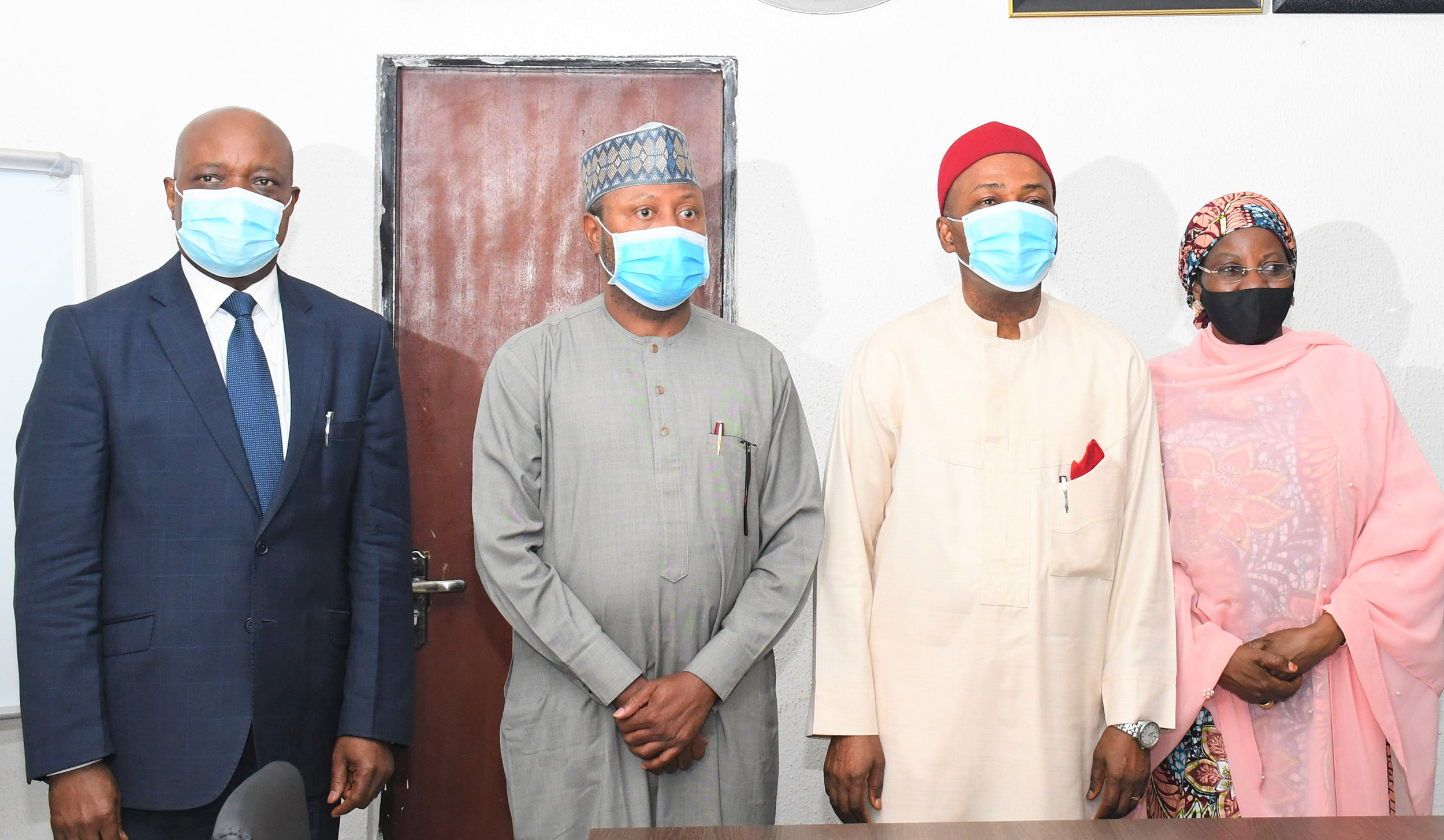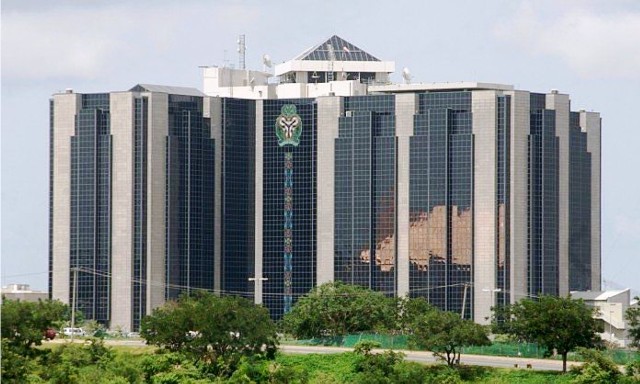News
One In 100 Die By Suicide, WHO Alerts

The World Health Organisation (WHO), has said, suicide remains one of the leading causes of death worldwide and responsible for one in 100 deaths globally.
In its latest estimates entitled, “Suicide worldwide in 2019”, WHO noted that every year, more people die as a result of suicide than HIV, malaria or breast cancer or war and homicide.
The latest estimates noted that in 2019, more than 700 000 people died by suicide: one in every 100 deaths, prompting the WHO to produce new guidance to help countries improve suicide prevention and care.
The WHO guidance is to help the world reach the target of reducing the suicide rate by 1/3 by 2030.
Speaking on the new estimates, Director-General of the WHO, Dr Tedros Adhanom Ghebreyesus, said the world cannot and must not ignore suicide.
“Each one is a tragedy. Our attention to suicide prevention is even more important now, after many months of living with the Covid-19 pandemic, with many of the risk factors for suicide 6 job loss, financial stress and social isolation still very much present.”
He said the new guidance would provide a clear path for stepping up suicide prevention efforts.
“Among young people aged 15-29, suicide was the fourth leading cause of death after road injury, tuberculosis and interpersonal violence. The rates vary, between countries, regions, and between males and females.”
The report also explained that more than twice as many males die due to suicide as females (12.6 per 100 000 males compared with 5.4 per 100 000 females).
“Suicide rates among men are generally higher in high-income countries (16.5 per 100 000). For females, the highest suicide rates are found in lower-middle-income countries (7.1 per 100 000).
Suicide rates in the WHO African (11.2 per 100 000), European (10.5 per 100 000) and South-East Asia (10.2 per 100 000) regions were higher than the global average (9.0 per 100 000) in 2019. The lowest suicide rate was in the Eastern Mediterranean region (6.4 per 100 000).
Globally, the suicide rate is decreasing; in the Americas, it is going up. Suicide rates fell in the 20 years between 2000 and 2019, with the global rate decreasing by 36 per cent, with decreases ranging from 17 per cent in the Eastern Mediterranean Region to 47 per cent in the European Region and 49 per cent in the Western Pacific.
“But in the Americas Region, rates increased by 17 per cent in the same time period. Although some countries have placed suicide prevention high on their agendas, too many countries remain uncommitted.
“Currently only 38 countries are known to have a national suicide prevention strategy.
“A significant acceleration in the reduction of suicides is needed to meet the SDG target of a one-third reduction in the global suicide rate by 2030.”
However, WHO has released comprehensive guidance for implementing its LIVE LIFE approach to suicide prevention. The four strategies of this approach are: limiting access to the means of suicide, such as highly hazardous pesticides and firearms; educating the media on responsible reporting of suicide; fostering socio-emotional life skills in adolescents; and early identification, assessment, management and follow-up of anyone affected by suicidal thoughts and behaviour.
WHO further recommended the banning of the most dangerous pesticides given that pesticide poisoning is estimated to cause 20 per cent of all suicides while national bans of acutely toxic, highly hazardous pesticides have shown to be cost-effective.
Other measures recommended by WHO include restricting access to firearms, reducing the size of medication packages and installing barriers at jump sites.
On responsible reporting by the media, the guide highlighted the role the media plays in relation to suicide.
“Media reports of suicide can lead to a rise in suicide due to imitation (or copycat suicides) – especially if the report is about a celebrity or describes the method of suicide.
“The new guide advises monitoring of the reporting of suicide and suggests that media counteract reports of suicide with stories of successful recovery from mental health challenges or suicidal thoughts. It also recommends working with social media companies to increase their awareness and improve their protocols for identifying and removing harmful content.”
WHO also noted that support for adolescence (10-19 years of age) was a critical period for acquiring socio-emotional skills, particularly since half of the mental health conditions appear before 14 years of age.
“The LIVE LIFE guidance encourages actions including mental health promotion and anti-bullying programmes, links to support services and clear protocols for people working in schools and universities when a suicide risk is identified.
“Early identification, assessment, management and follow-up apply to people who have attempted suicide or are perceived to be at risk. A previous suicide attempt is one of the most important risk factors for future suicide.
“Health-care workers should be trained in early identification, assessment, management and follow-up.
“Survivors’ groups of people bereaved by suicide can complement the support provided by health services. Crisis services should also be available to provide immediate support to individuals in acute distress.
The new guidance, which includes examples of suicide prevention interventions that have been implemented across the world, in countries such as Australia, Ghana, Guyana, India, Iraq, the Republic of Korea, Sweden and the USA can be used by anyone who is interested in implementing suicide prevention activities, whether at the national or local level and in the governmental and non-governmental sectors alike.
On his part, suicide prevention expert at the World Health Organisation, Alexandra Fleischmann said, “While a comprehensive national suicide prevention strategy should be the ultimate goal for all governments, starting suicide prevention with LIVE LIFE interventions can save lives and prevent the heartbreak that follows for those left behind.”
News
RHI: First Lady Gives N50m Business Grants To Rivers PWDS, Disabled Veterans …As RGS Unveils Free Medical Services For Vulnerable Persons

Nigeria’s First Lady, Senator Oluremi Tinubu, has extended a major financial lifeline to Persons with Disabilities (PWDs) and disabled veterans in Rivers State.
The support comes under the Renewed Hope Initiative (RHI) Social Investment Programme, a nationwide economic empowerment effort.
The event, held on Wednesday at the Banquet Hall of the Government House, Port Harcourt, coincided with the 2025 International Day of Persons with Disabilities, with the theme: “Fostering disability inclusive societies for advancing social progress”.
Wife of the Rivers State Governor, Lady Valerie Siminalayi Fubara, who represented the First Lady of Nigeria, presented the small business grants to the beneficiaries.
The RHI empowerment effort covers all 36 states, the Federal Capital Territory (FCT), and the Defence and Police Officers’ Wives Associations (DEPOWA).
Each jurisdiction will have 250 PWDs receive a N200,000 Business Recapitalisation Grant per beneficiary, amounting to N50million. In total, with N1.9 billion being disbursed to 9,500 PWDs across Nigeria.
Expressing delight at unveiling the programme under the RHI Social Investment Framework, Senator Tinubu noted that the launch was intentionally scheduled for the International Day of Persons with Disabilities.
She emphasised the administration’s commitment to inclusive growth, stating that the nation becomes stronger when all citizens are empowered to contribute.
According to the First Lady, “Our commitment to improving lives has also been demonstrated through various interventions in
Agriculture, Economic Empowerment, Education, Health, and Social Welfare, aimed at improving the well-being of families across our country. To all our beneficiaries, I encourage you to make good use of this opportunity.”
Mrs Tinubu said that the programme aligns with the Renewed Hope Agenda of President Bola Ahmed Tinubu, which seeks to promote inclusive growth and shared prosperity by ensuring that no Nigerian is left behind, especially those whose needs are often overlooked.
She announced that the RHI Governing Board has approved making the Economic Empowerment Programme for PWDs an annual event every December 3.
She thanked the Governor of Rivers State, Sir Siminalayi Fubara; and his wife, Lady Valerie Fubara, for their support, and encouraged the beneficiaries to make good use of the opportunity.
In her speech, Wife of Rivers State Governor, Lady Valerie Siminalayi Fubara, assured that the Renewed Hope Initiative in the State will collaborate with the National Commission on Persons with Disabilities to promote an inclusive society where the rights and privileges of persons with disabilities are guaranteed.
She said that the celebration of the 2025 World Disability Day, reaffirms the government’s commitment to create a more just, inclusive, equitable and sustainable State, where no one is left behind.
Lady Fubara also delivered a strong message of empowerment to the beneficiaries, saying “You are not defined by limitations. You are defined by your strength, your creativity, your persistence, your brilliance, and your unique contribution to this State.”
She urged society to champion inclusion, noting that disability is not a tragedy but that discrimination, silence, and exclusion are.
The governor’s wife confirmed that 250 beneficiaries in Rivers State received the N200,000 grant, and urged all the beneficiaries to utilise the funds wisely.
“Let it be a seed that grows into something greater; a business that sustains you and your family,” she said.
Also speaking, Executive Secretary, Rivers State Contributory Health Protection Programme, Dr Vetty Agala, announced the enrollment of the 250 persons with disabilities into the state’s contributory health protection programme, adding that the beneficiaries will now enjoy free medical care and services at primary, secondary and tertiary levels in the State.
“You’re going to not only access primary care, but anytime you require secondary or tertiary services, you will be referred to those levels of care at no extra cost,” in line with the government’s “Health For All Rivers Initiative,” she said.
In her own remarks, Permanent Secretary of the Rivers State Ministry of Social Welfare and Rehabilitation, Mrs. Lorenta Davis-Dimkpa, stated that efforts are underway to establish a South-South office for the Disability Commission.
She also confirmed that there was an ongoing work to domesticate the 2018 Disability Act.
In her goodwill message, former Justice of the Supreme Court, Justice Mary Odili (rtd), commended both the Federal and Rivers State governments for taking bold steps to ensure persons with disabilities are included in governance.
Earlier in her speech, the State Coordinator of the Renewed Hope Initiative, Hon Tonye Briggs Oniyide, had said that the programme was carefully designed to address the needs of persons with disabilities and disabled veterans, helping them upscale their businesses across the State.
Speaking on behalf of the beneficiaries, Kie Obamanu, called for the full implementation of disability laws to eliminate discrimination.
He expressed gratitude to Nigeria’s First Lady and the wife of the Rivers State Governor for their support.
Highlight of the event was the presentation of the Universal Health Coverage Ambassador Award to Lady Valerie Fubara by the Rivers State Ministry of Health, in recognition of her contributions to improving access to healthcare services in the State.
News
Fubara Assures Greater Collaboration With Navy

Rivers State Governor, Sir Siminalayi Fubara, has assured greater collaboration with Navy and other security agencies in combatting crimes and criminality in the State.
The governor also hailed the appointment of Vice Admiral Idi Abbas as the Chief of Naval Staff, saying he will deliver on his mandate based on his track record of excellence and meritorious service.
Fubara gave this assurance when Abbas and his team paid the governor a courtesy call at the Government House, Port Harcourt, yesterday.
The governor also commended the efforts of the Nigeria Navy in tackling criminality on Rivers waterways and protecting critical national assets.
He emphasized the need for more security surveillance on Rivers State coastal environments to safeguard lives and properties.
According to him, the Navy’s superior technology, manpower, and tactical competence are vital to protecting the state’s vast waterways.
“We need to work together for us to succeed,” he said, stressing that collaboration remains the most effective way to keep residents, assets, and the environment safe.
Pointing out the strategic significance of Rivers State as the hub of Nigeria’s crude oil and coastal infrastructure, Fubara commended the Navy for its continuous efforts in preventing losses to lives, livelihoods, and the ecosystem, and assured the service of the government’s sustained cooperation and support.
On his part, Abbas said his visit was part of a nationwide tour aimed at assessing operational readiness across naval formations since assuming command on October 30, 2025,
The new Naval Chief noted that Rivers State hosts several critical energy installations that fall under the Navy’s mandate to protect, adding that the state also remains central to the Navy’s training operations, with several key units located within its territory.
Abbas commended Governor Fubara for the State’s consistent support, citing the provision of six gunboats and the donation of a school building as significant contributions that have boosted the Navy’s operational efficiency.
He appealed for continued collaboration as the Navy intensifies efforts to secure the maritime domain.
Taneh Beemene
News
Fubara Tasks Traditional Rulers On Peace, Security …Says Education, Job Creation ‘ll Receive Boost In 2026 Budget

Rivers State Governor Sir Siminalayi Fubara has declared that amidst glaring challenges, his administration has remained determined and focused to dispense good governance and put in place the needed development in the State.
The governor disclosed this while addressing the 123rd and 124th combined quarterly general meeting of the Rivers State Council of Traditional Rulers at the Council Secretariat on Monday.
Fubara who commended the traditional rulers for their supports and efforts in promoting peace and development in the State, urged them to live up to their roles as custodians of peace by becoming alert and more vigilant in their domains to tackle the menace of insecurity especially in boundary communities.
He advised the traditional rulers to work with local government chairmen and security agencies to safeguard lives and properties in their domains.
“Let me thank everyone of you from the bottom of my heart, I met you in Government House to say a big thank you, because the royal fathers stood as fathers in our most trying moments.
“I say thank you again for your support, for understanding that your role is fatherly role, and one of the reasons you were elected or selected to be head is to bridge the gap in terms of crisis, and to play fatherly role when called upon. Thank you for ensuring that peace reigns in Rivers State,” he said.
The governor reaffirmed his commitment towards the protection of lives and property in the State.
“Our vision is to ensure that Rivers State is safe, our vision includes the provision of good health care services, which we are doing, the records are there, people from the south east are witnessing what is happening in the Zonal Hospital in Bori, presently. I’m sure that before the end of this year, the Omoku and Ahoada Zonal Hospitals will be commissioned while Degema is 80% completed, we’re not just talking, we’re doing it,” he said.
Fubara, however, dismissed speculations making the rounds on the issue of 10,000 jobs, urging the public to discountenance the false information.
He assured that employment will be carried out in the state based on needs, and not on political considerations.
He disclosed that the 2026 budget will make provision for job creation and the refurbishment of schools in the State which, he noted, are currently in deplorable conditions, having given due consideration to roads and the health sector.
“Let me use this medium to address an issue, I saw some people sending messages to my WhatsApp, they want to protest against 10,000 jobs, they claim was included in the budget, which budget? We are going to employ based on the needs of the state, I’m not going to employ politically to please anybody,” he assured.
The governor promised to address the requests of the traditional rulers, and charged them to ensure that their meeting brings out a strong position that will make the State stronger.
Earlier in his welcome address, the Chairman of the Rivers State Council of Traditional Rulers, and Eze Oha Apara 1V, of Apara Kingdom, HRM Eze Chike Amadi Worlu-Wodo, thanked the governor for personally attending the meeting.
The royal father restated the support of the traditional rulers to the State Government, and presented some requests of the Council to the governor.
“Your Excellency, the news that we have received all over the State is quite cheering and symbolic of the peaceful life and developments that Rivers people yearn for in the State. You have brought back those glorious old days of harmonious living and peaceful coexistence the way it was. May the Almighty God bless you and help you to sustain this laudable feat,” the royal father prayed.
In his remarks, the State Commissioner for Chieftaincy Affairs , Egnr.Charles Amadi, expressed gratitude to the governor for his developmental strides in the State, and also commended the traditional rulers for their unwavering commitment towards promoting peace in the State.
-
Business1 day ago
Shippers Council Vows Commitment To Security At Nigerian Ports
-

 Business1 day ago
Business1 day agoNigeria Risks Talents Exodus In Oil And Gas Sector – PENGASSAN
-

 Business1 day ago
Business1 day agoCBN Revises Cash Withdrawal Rules January 2026, Ends Special Authorisation
-
Business2 days ago
NCDMB, Others Task Youths On Skills Acquisition, Peace
-

 Business1 day ago
Business1 day agoFIRS Clarifies New Tax Laws, Debunks Levy Misconceptions
-

 News1 day ago
News1 day agoTinubu Swears In Christopher Musa As Defence Minister
-

 Women2 days ago
Women2 days agoRIVERS NAWOJ AND PHACCIMA PARTNER TO STRENGTHEN MUTUAL GOALS
-

 online games2 days ago
online games2 days agoHow Pocket Option Works: A Complete Beginner’s Guide

